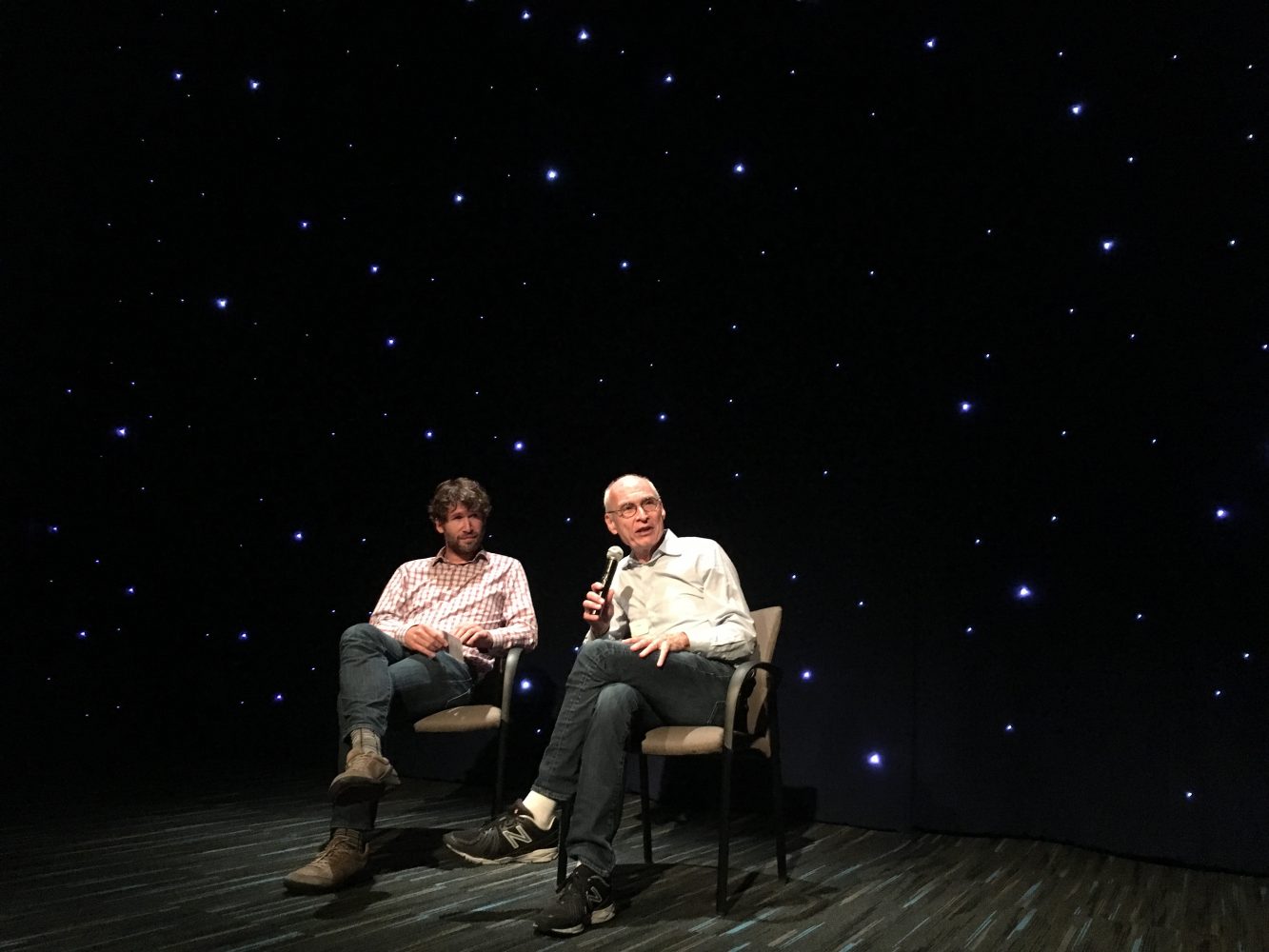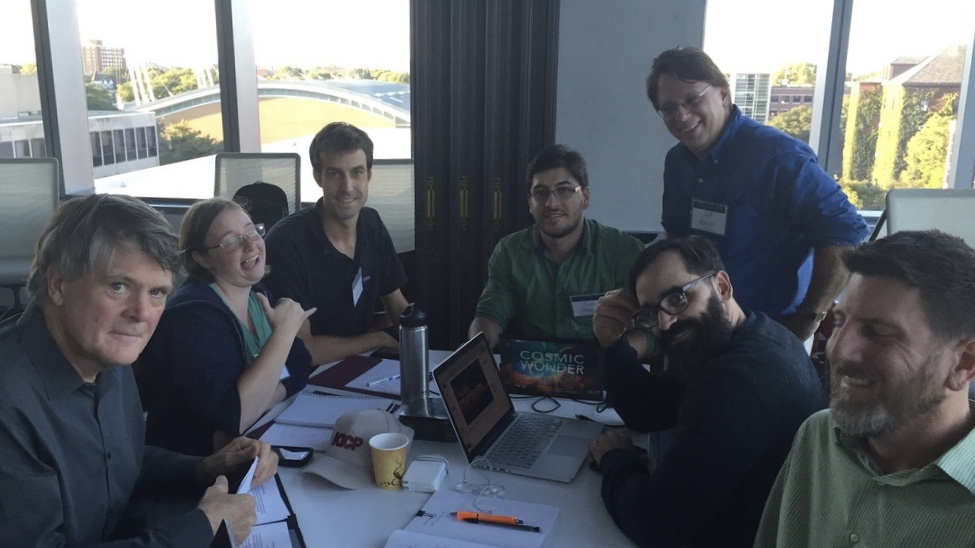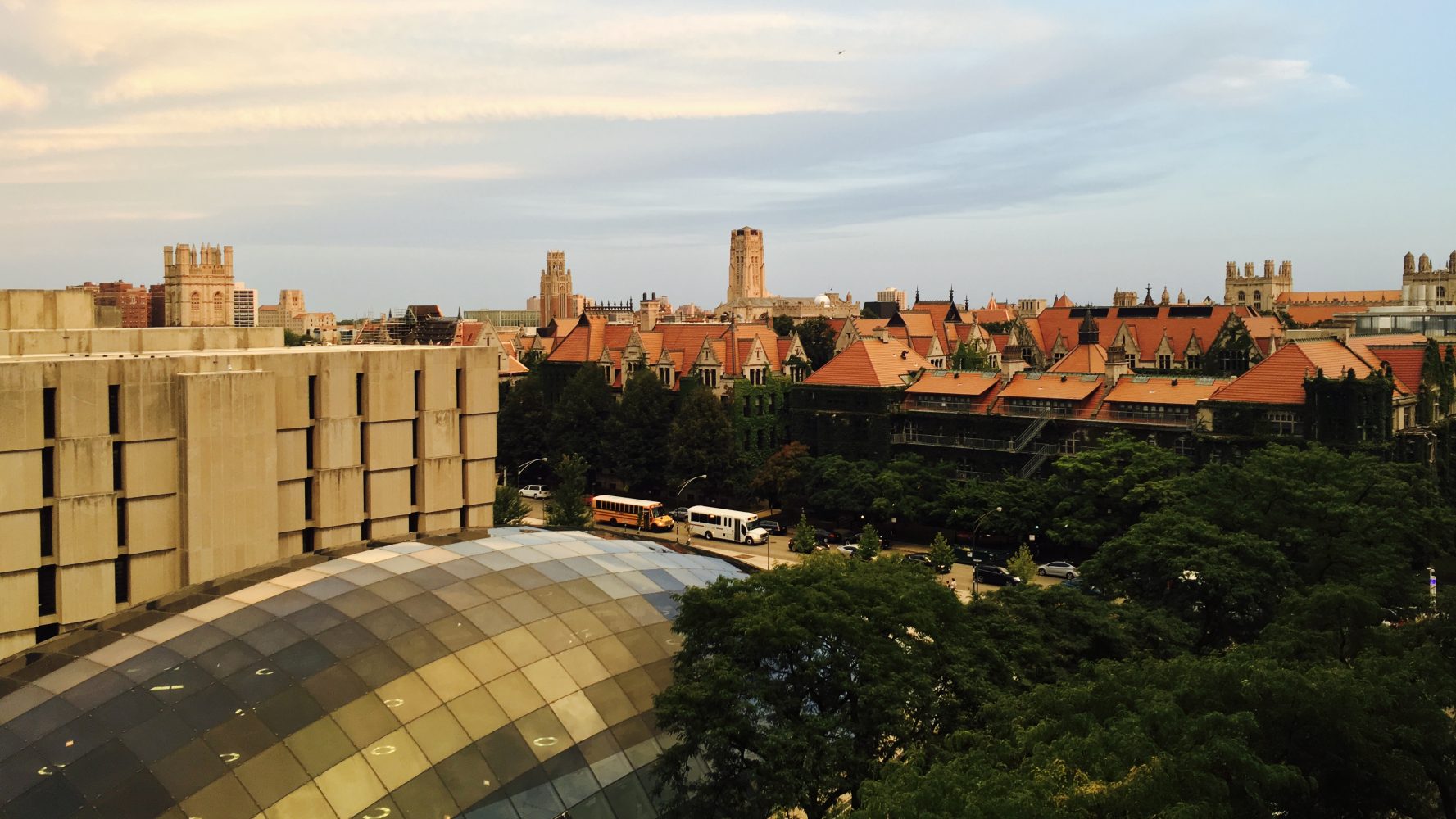
Waves can teach us a lot about where we are. Pacific islanders once used changes in ocean wave patterns to navigate and predict the location of islands, passing this knowledge from generation to generation. And about a hundred years ago, Einstein’s Theory of General Relativity predicted that gravitational waves carry information about the distribution of matter in the fabric of space and time. On September 14, 2015, gravitational waves were detected for the first time, validating Einstein’s prediction.
Sharing knowledge of waves can in turn create waves of learning that just may be a key to our future. As a science educator, it’s important for me to partake in this process. I recently attended Einstein’s Outrageous Universe, a three-day course organized by the Kavli Institute for Cosmological Physics at the University of Chicago. The course, introduced by Dr. Michael Turner, famous for coining the term “dark energy,” aimed to share a better understanding of cosmology, to energize conversations with leading-edge researchers and to provide tools and resources that bring the frontiers of physics to planetariums and science centers across the nation.
At the conference, Dr. Daniel Holz talked about the unexpected first detection of gravitational waves at the Laser Interferometer Gravitational-Wave Observatory (LIGO), and how those waves are ripples in the curvature of space-time that propagate at the speed of light. They are caused by some of the most catastrophic and energetic processes in the universe, such as colliding black holes.

Dr. Jorge Perez-Gallego (2nd from right) working at the Kavli Institute for Cosmological Physics.
We also met with experts to dive deeper into some fascinating topics: New York Times science writer Dennis Overbye explored the world of Einstein himself; Dr. Andrea Ghez spoke on the black hole at the center of the Milky Way; Dr. Daniel Scolnic explained the death of stars; Dr. Michael Gladders offered insight into gravitational lensing; Dr. Rocky Kolb shared extensive knowledge on the Big Bang; and Dr. Joseph Lykken explained ideas on the future of General Relativity. The icing on the cake was a visit to the Adler Planetarium, the oldest planetarium in the United States.
I had a great time plunging into my previous career as an academic, and was reminded of the rich exchange of ideas there, and how those ideas need to be shared. Planetariums and science centers have a responsibility to make leading-edge research accessible to broader audiences, including the next generation of scientists and engineers, by means of informal science education.
This process of sharing ideas helps us better understand our world. Just think, people once thought the Earth was flat; now we can see much of the cosmos. Each generation builds on the proven ideas of their predecessors—Einstein’s model came to expand upon Newton’s, and explained some observations the latter could not. Some of the predictions of Einstein’s model are being validated now, but it is also becoming obvious that, sooner or later, a new model will expand upon Einstein’s. Who knows, maybe this new model will somehow be the result of a spark in a young mind during an inspirational visit to a planetarium like ours. Keep looking up!

The University of Chicago campus